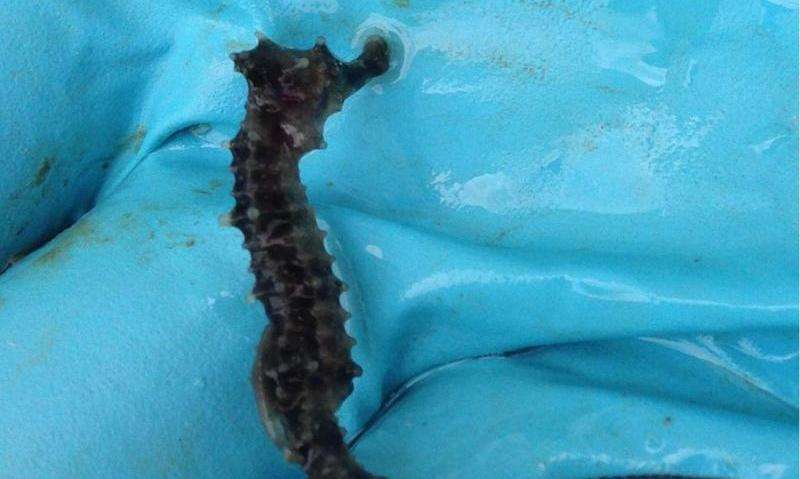Amazing diversity of species reported on Solent oyster restoration project

A surprising diversity of species including seahorses and critically endangered eels have been reported in the Solent.
They have been found inhabiting oyster cage systems, which are part of a major conservation project to restore the native oyster to local waters.
The aim of the ambitious Solent Oyster Restoration Project, led by the Blue Marine Foundation, is to reintroduce a million oysters over the coming year (and for the next five years) to help clean up the Solent, which once supported the biggest oyster fishery in Europe.
The project seeks to substantially increase the population of native oysters by 2022. The long-term aim is to achieve a self-sustaining oyster population, which is likely to improve Solent water quality and ecosystem productivity with associated benefits for local inshore fisheries.
Postgraduate students from the University of Portsmouth who are monitoring the project are finding an amazing diversity of species inhabiting the cage systems, including:
- A juvenile spiny/long-snouted seahorse (Hippocampus guttulatus), which is particularly exciting as it was recorded it in the Camber Dock in Portsmouth Harbour in an area where this species is not usually found.
- Fifteen sightings of endangered European Eels (Anguilla anguilla) that are listed on The IUCN Red List of Threatened Species as 'Critically Endangered', which is only one stage away from becoming extinct in the wild. Sightings have been recorded at several sites across the Solent.
- A number of fish species including snake pipefish (Entelurus aequoreus), fifteen-spined stickleback (Spinachia spinachia), long-spined sea scorpion (Taurulus bubalis) and tompot blenny (Parablennius gattorugine).
- Since the cages were installed in April 2017, 83 different species have been found to be living among the oysters – an indication on how native oysters enhance marine biodiversity.
Postgraduate researcher Luke Helmer, whose MSc project was the initial pilot study for the oyster restoration project, said: "We began our trial expecting that the oysters would become inhabited by smaller organisms fairly quickly. However, we did not expect the extreme abundance and diversity that we have been witnessing. The fact that our cage systems became home to one European eel was initially unexpected and amazing, the further 14 sightings, with sizes ranging from 10 cm to nearly half a metre in length, is phenomenal. We have also been lucky enough to find a juvenile seahorse which, like the eels, was probably attracted by the protection and banquet of small crustaceans provided by the 'oyster hotels'.
"Finding juvenile sea bass, another recreational and commercially important species, further highlights the importance of restoring the native oysters for the benefit of the wider ecosystem and the local community."
Dr Joanne Preston from the University of Portsmouth's Institute of Marine Sciences, lead scientist on the cage system project added: "These findings are quite spectacular, indicating the oyster cages are functioning like artificial reefs, increasing fish abundance and species diversity. It is a fantastic example of how native oysters create their own unique ecosystem and provides a glimpse of the transformational impact restoring oyster beds could have on the wider marine environment in the Solent."
BLUE's UK Project Officer, Morven Robertson said: "We said bringing back the oyster would bring back an ecosystem. It has!"
Provided by University of Portsmouth



















